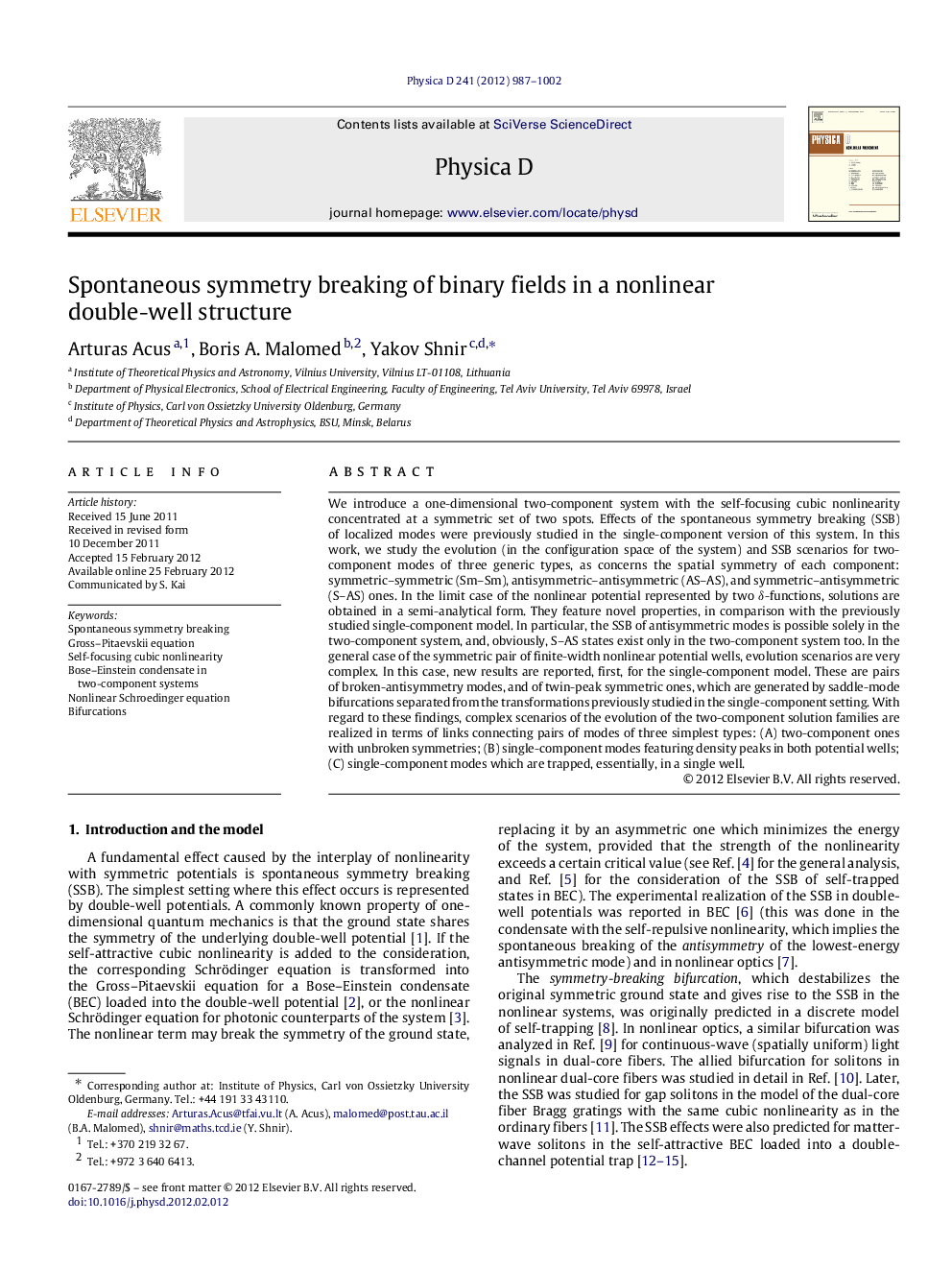| Article ID | Journal | Published Year | Pages | File Type |
|---|---|---|---|---|
| 1897593 | Physica D: Nonlinear Phenomena | 2012 | 16 Pages |
We introduce a one-dimensional two-component system with the self-focusing cubic nonlinearity concentrated at a symmetric set of two spots. Effects of the spontaneous symmetry breaking (SSB) of localized modes were previously studied in the single-component version of this system. In this work, we study the evolution (in the configuration space of the system) and SSB scenarios for two-component modes of three generic types, as concerns the spatial symmetry of each component: symmetric–symmetric (Sm–Sm), antisymmetric–antisymmetric (AS–AS), and symmetric–antisymmetric (S–AS) ones. In the limit case of the nonlinear potential represented by two δδ-functions, solutions are obtained in a semi-analytical form. They feature novel properties, in comparison with the previously studied single-component model. In particular, the SSB of antisymmetric modes is possible solely in the two-component system, and, obviously, S–AS states exist only in the two-component system too. In the general case of the symmetric pair of finite-width nonlinear potential wells, evolution scenarios are very complex. In this case, new results are reported, first, for the single-component model. These are pairs of broken-antisymmetry modes, and of twin-peak symmetric ones, which are generated by saddle-mode bifurcations separated from the transformations previously studied in the single-component setting. With regard to these findings, complex scenarios of the evolution of the two-component solution families are realized in terms of links connecting pairs of modes of three simplest types: (A) two-component ones with unbroken symmetries; (B) single-component modes featuring density peaks in both potential wells; (C) single-component modes which are trapped, essentially, in a single well.
► A two-component system with the nonlinearity concentrated at two points is introduced. ► New symmetry- (and antisymmetry-) breaking scenarios are analyzed in this system. ► New results for the single-component model are reported too. ► Linkage between the symmetry-breaking in the one- and two-component systems is established.
